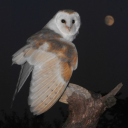
✮∘˙☮︎︎She/her, 18, polish🇵🇱, atheist, pacifist, metalhead, 70s lover, horror fan, goth, likes dark literature, vampires, evil Dead, Halloween 1978, autumn, writer, editor,genderfluid🩷🤍💜🖤💙, aroace 🧡💛🤍🩵💙, autistic ♾️🌈, introvert, likes dinosaurs and moths,☮︎︎˙∘✮ ✿∘˙☯___________________________☯˙∘✿ ☮︎︎✞∘˙☠︎︎Sea and nature lover. On this blog I will post: sea life and nature fun facts, information, pictures and some fun things like mems. There will be lots interesting fish types, sharks, moths, bugs, insects and other things. hope you will all enjoy it here. have fun☠︎︎˙∘✞☮︎︎
32 posts
The Name Death's-head Hawkmoth Refers To Any Of Three Moth Species Of The Genus Acherontia (Acherontia







The name death's-head hawkmoth refers to any of three moth species of the genus Acherontia (Acherontia atropos, Acherontia styx and Acherontia lachesis). The former species is found throughout Africa and in Europe, the latter two are Asian; most uses of the common name refer to the African species. These moths are easily distinguishable by the vaguely human skull-shaped pattern of markings on the thorax. They are large nocturnal moths with brown and yellow or orange coloring, and all three species are fairly similar in size, coloration and life cycle.
The African death's-head hawkmoth (Acherontia atropos) is the largest moth in the British Isles (though not in Africa), with a wingspan of 13 cm (5 in); it is a powerful flier, having sometimes been found on ships far from land. The forewings are a mottled dark brown and pale brown, and the hind wings are orangey-buff with two narrow dark bands parallel with the hind margin. The abdomen is a similar orangey-brown, with a broad, dark dorsal stripe. The most notable feature is a patch of short yellowish hairs on the thorax that gives the impression of depicting a human skull. It is a striking insect, but is seldom seen because it flies late in the night.
A 2020 study describes how, when viewed upside-down, Acherontia atropos creates an illusion of a head with eyes: the mark on its thorax likened to a human skull is the "nose", with the skull's eye-sockets resembling nostrils. Spots on its forewings can be seen as eyes, and various other markings and features can be interpreted as ears, muzzle and lips. This illusion is also present in Agrius convolvuli (convolvulus hawk-moth) and five other species, with the study author suggesting that the function of the illusion of an eyed head is "almost certainly to deter, distract or otherwise deceive predators".
The caterpillar of the African death's-head hawkmoth is also sturdy and somewhat variable in colour, being some shade of buff, green or brown, with seven diagonal blue lines. At the rear is a curved, thorn-like horn. It can attain a length of 5 to 6 in (13 to 15 cm). The other two species of death's-head hawkmoth similarly have three larval color forms: typically, green, brown and yellow. The pupa is stout and reddish-brown, and is formed 8 to 10 in (20 to 25 cm) under the ground in a chamber the size of a large hen's egg.
These moths have several unusual features. All three species have the ability to emit a loud chirp if irritated. The sound is produced by inhaling and expelling air, which vibrates the epipharynx like an accordion, often accompanied by flashing of the brightly colored abdomen in a further attempt to deter predators. The chirp of the death's head hawkmoth takes approximately one-fifth of a second. A study by National Geographic found that the epipharynx was originally built to suck up honey, but later evolved to produce sound.
Adults of all three species are commonly observed raiding beehives of different species of honey bee; A. atropos only invades colonies of the well-known western honey bee, Apis mellifera, and feeds on both nectar and honey. They can move about in hives without being disturbed because they mimic the scent of the bees and are not recognised as intruders. If their disguise is discovered, the moth's thick waxy cuticle helps to protect it against stings.
Leaves of the potato plant contain calystegines, a group of polyhydroxy alkaloids, which are toxic. The larva of A. atropos feeding on potato foliage accumulates these alkaloids.
-
 alienstimboards liked this · 9 months ago
alienstimboards liked this · 9 months ago -
 futuristicfuntraveler liked this · 9 months ago
futuristicfuntraveler liked this · 9 months ago -
 california-sunrise-blog reblogged this · 10 months ago
california-sunrise-blog reblogged this · 10 months ago -
 california-sunrise-blog liked this · 10 months ago
california-sunrise-blog liked this · 10 months ago -
 toaster-with-a-wifi-router reblogged this · 1 year ago
toaster-with-a-wifi-router reblogged this · 1 year ago -
 toaster-with-a-wifi-router liked this · 1 year ago
toaster-with-a-wifi-router liked this · 1 year ago -
 mushroommothlady reblogged this · 1 year ago
mushroommothlady reblogged this · 1 year ago -
 fandommothlady liked this · 1 year ago
fandommothlady liked this · 1 year ago -
 medst reblogged this · 1 year ago
medst reblogged this · 1 year ago -
 medst liked this · 1 year ago
medst liked this · 1 year ago -
 significantlylesschill liked this · 1 year ago
significantlylesschill liked this · 1 year ago -
 callmeseven reblogged this · 1 year ago
callmeseven reblogged this · 1 year ago -
 seraphhiim liked this · 1 year ago
seraphhiim liked this · 1 year ago -
 bullarios-blog liked this · 1 year ago
bullarios-blog liked this · 1 year ago -
 fooslaf reblogged this · 1 year ago
fooslaf reblogged this · 1 year ago -
 fooslaf liked this · 1 year ago
fooslaf liked this · 1 year ago -
 astroplanes liked this · 1 year ago
astroplanes liked this · 1 year ago -
 sunnyworldsposts liked this · 1 year ago
sunnyworldsposts liked this · 1 year ago -
 beatriz2009silva liked this · 1 year ago
beatriz2009silva liked this · 1 year ago -
 deathmoth-blog liked this · 1 year ago
deathmoth-blog liked this · 1 year ago
More Posts from Deathmoth-blog
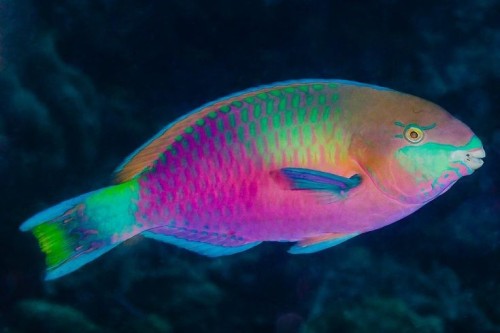

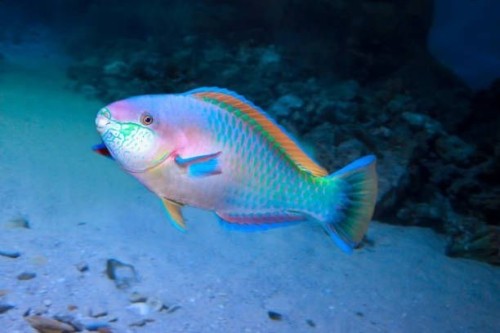



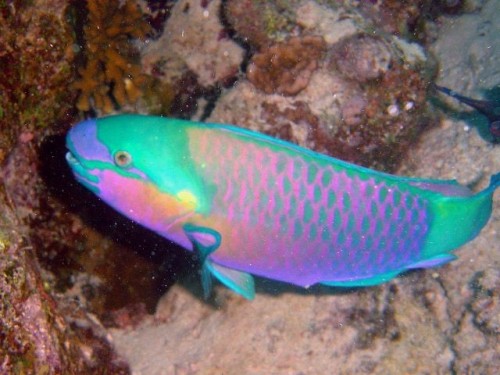

Parrotfish are a group of fish species traditionally regarded as a family (Scaridae), but now often treated as a subfamily (Scarinae) or tribe (Scarini) of the wrasses (Labridae). With roughly 95 species, this group's largest species richness is in the Indo-Pacific. They are found in coral reefs, rocky coasts, and seagrass beds, and can play a significant role in bioerosion.
Parrotfish are named for their dentition, which is distinct from other fish, including other labrids. Their numerous teeth are arranged in a tightly packed mosaic on the external surface of their jaw bones, forming a parrot-like beak with which they rasp algae from coral and other rocky substrates (which contributes to the process of bioerosion).
Maximum sizes vary within the group, with the majority of species reaching 30–50 cm (12–20 in) in length. However, a few species reach lengths in excess of 1 m (3 ft 3 in), and the green humphead parrotfish can reach up to 1.3 m (4 ft 3 in). The smallest species is the bluelip parrotfish (Cryptotomus roseus), which has a maximum size of 13 cm (5.1 in).





Plectorhinchus chaetodonoides, the harlequin sweetlips, clown sweetlips, spotted sweetlips or many-spotted sweetlips, is a species of marine ray-finned fish, a sweetlips belonging to the subfamily Plectorhinchinae, one of two subfamilies in the family Haemulidae, the grunts. It is native to the Indo-Pacific region. This species is of minor importance to local commercial fisheries and can be found in the aquarium trade
Plectorhinchus chaetodonoides has fleshy lips which become moderately swollen as the fish grows, there are 6 pores on the chin but no central pit.< The dorsal fin typically has 12 spines, although rarely it has 11 spines. and 18-20 soft rays, the soft rayed part of the dorsal fin has a height which is roughly equal to the length of its base. The juveniles are brownish with large, discrete creamy white blotches on the body these develop brown spotting as the fish matures. As they grow into adults the coloration slowly develops a greyish background colour broken large, dark brown spots, these spots having a greater diameter of the iris. The maximum recorded total length is 72 cm (28 in), although 60 cm (24 in) is more typical, and the maximum published weight is 7 kg (15 lb). It is thought that the juveniles are Batesian mimics of poisonous flatworms. The caudal fin of juveniles is deeply forked and has wide rounded lobes both of which are mostly white marked with a large brown spot, in adults it is much less forked.
Plectorhinchus chaetodonoides is found in coral-rich parts of clear lagoons and on seaward reefs. The adults are solitary fish, living in the vicinity of and sheltering beneath ledges or caves during the day. The juveniles are found sheltering in corals. It is a carnivorous species which preys on benthic invertebrates such as crustaceans and molluscs, as well as fishes, which it forages for during the night. The juveniles typically swim in a head down posture wildly undulating their fins as they swim, a behaviour which may mimic toxic or distasteful platyhelminths or nudibranchs and so provide some protection from predation.

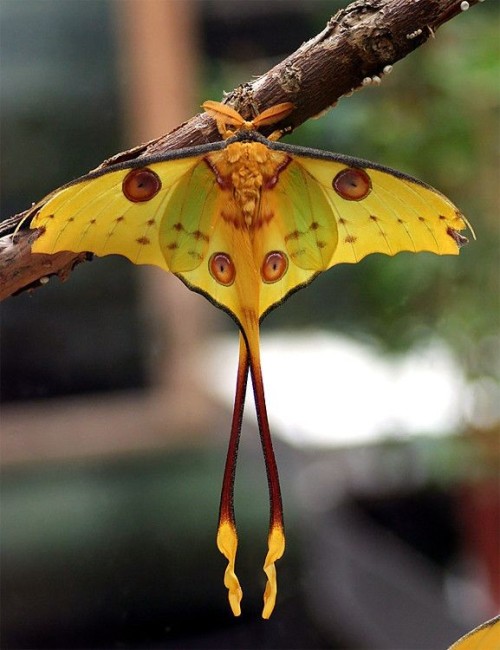


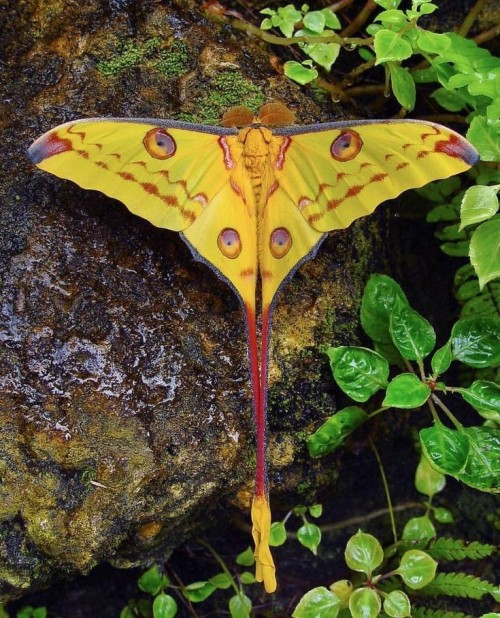
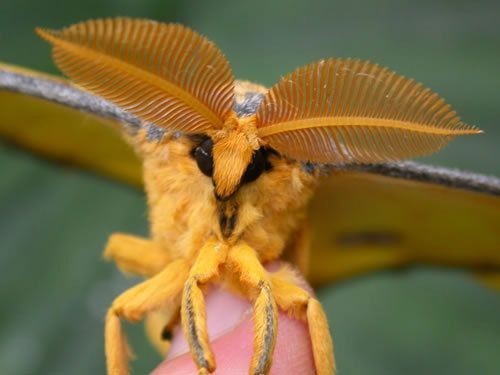

The comet moth or Madagascan moon moth (Argema mittrei) is a moth native to the rain forests of Madagascar. The species was first described by Félix Édouard Guérin-Méneville in 1847. The adult moth cannot feed and only lives for 4 to 5 days. Although endangered in the wild due to habitat loss, the comet moth has been bred in captivity.
There are physical differences among females and males. Females have more rounded wings. The male has a wingspan of 20 cm (7.9 inches) and a tail span of 15 cm (5.9 inches), making it one of the world's largest silk moths. The males have long, feathery antennas and the females have thin antennas. Argema mittrei wings have large eyespot, giving the appearance of a large and dangerous creature that should not be attacked.
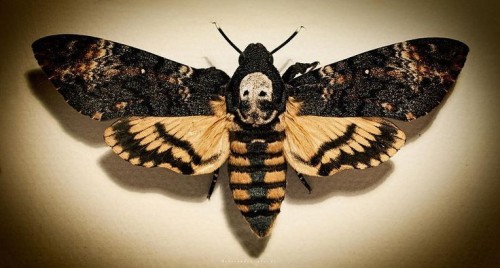
𓆉˚✞hello. This is deathmoth-blog and this is my new blog for sea life and nature. I will post sea life and nature pictures here, some fun facts and other things. I will definitely post more moths and bugs but also different fish types and mostly interesting sea life creatures. Come and join me in lovely sea life and nature journey and enjoy being here✞˚𓆉
My TikTok account
My stimboard blog's:
@alienstimboards
@alienstimboard
My other blogs:
@alienstimboard
@star-works
🪷∘˙✯_________________________✯˙∘🪷
And now I think it's time to introduce myself. Hi I'm deathmothblog but you can call me patty. I'm polish, 18 and I go by she/her. I'm a pacifist, metalhead and romantic goth, bisexual, autistic and atheist. I like music like Oingo Boingo, Metallica, talking heads, Joost Klein, The kills, Kiss, Tv girl and many more. I also like horror movies such as Halloween 1978, evil Dead, silence of the lambs, jaws and cube. I also like tv shows like doctor who, doctor house, the office, friends, parks and recreation, Torchwood, Ash vs evil dead, good omen, gravity Falls, smiling friends and wonder over yonder. My hobbies are reading, learning about different moths and sea creatures, I also like dinosaurs, sometimes I paint and draw, I write, I edit sometimes, create things, post on my blog, I'm interested in fashion and I like meeting new people. I talk a lot. I also like autumn and cozy clothes.
🪷∘˙✯________________________✯˙∘🪷